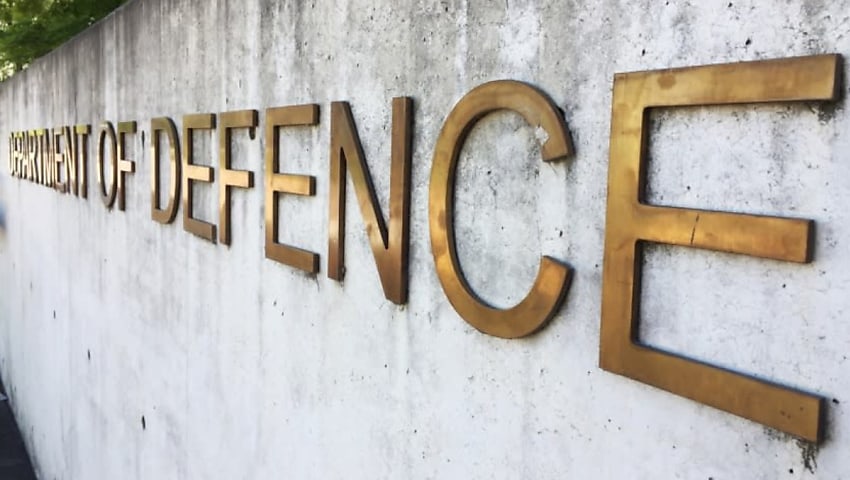Opinion: There is an unjustified poor regard for defence program acquisition costs and delivery dates. What the general public fails to understand is that in many cases, the process to achieve the program goals are imperfectly understood from the beginning, and only becomes apparent as the program moves on, writes defence industry analyst and former naval officer Christopher Skinner.
To continue reading the rest of this article, please log in.
Create free account to get unlimited news articles and more!
In the United States Department of Defense Instruction 5000.85 “Major Capability Acquisition” Change 1, dated 4 November 2021, the likelihood of changes to both schedule and deliverables are expected and catered for in the processes to be followed. The nature of programs themselves can vary greatly and DoDI 5000.85 caters for six widely dissimilar approaches, ranging from urgent capability acquisitions through major capability acquisition to defense business systems.
It says that “(US) DoD policy (is) to deliver operationally effective, suitable (ie it is sustainable), survivable, affordable, secure and supportable solutions to the end user in a timely manner.”
The US Defense Acquisition System adheres to six tenets: 1. Simplify acquisition policy; 2. Tailor acquisition approaches; 3. Empower program managers; 4. Conduct data-driven analysis; 5. Actively manage risk; and 6. Emphasise sustainment (in design and production).
One statement in the DoDI really appealed to me: “Acquisition decisions will be made at the lowest authorised level, commensurate with the (Acquisition Category) and program risk, to ensure they are timely, and made by those with the greatest knowledge of the program.” No mention there of the political spin that may be applied to the decisions!
Later in the same document is described the Technology Maturation and Risk Reduction [TMRR] phase which “includes a mix of activities intended to reduce program risks. These include the design and requirements trades (tradeoffs) necessary to ensure an affordable product and an executable development and production program. Close collaboration with the requirements community is essential and will inform development and validation of the capability development (mandate)”.
In other words, there is no set-in-concrete scope, cost or timeline of the program until the horsetrading among end user representatives, budget managers, and technical authorities has been progressed to define an achievable compromise. And even then, that compromise may be reassessed from time to time during its execution.
The program then approaches the next stage of engineering and manufacturing development, “Specific attention will be given to overall affordability, the strategy for maintaining competition throughout the program life cycle, source selection criteria, contract incentives, the Intellectual Property [IP] strategy, threat projections, assessment of foreign ownership, control or influence [FOCI] and the use of modular open systems approach to evolve systems capability and establish and maintain interoperability.”
A review conducted at this point “requires demonstration that all sources of risk have been adequately mitigated to support a commitment to design, development and production. Risk sources include, but are not limited to, technology, threat projections, security, engineering, integration, manufacturing, sustainment and cost risk”.
Approval to move into low-rate initial production will depend on a number of factors including: (prototypes and other) “test and evaluation accomplishments, exportability and international acquisition planning”, (proposed limited quantities) “affordability requirements and program goals, finalised sustainment metrics and Future Years Defense Program [FYDP] funding requirements”.
“Some programs such as spacecraft and ships will not produce prototypes during engineering and manufacturing development for use solely as test articles because of the high cost of each article. In this case, the first article produced will be tested and evaluated, and then fielded as an operational asset.”
What is clearly evident from this and other US Defense Acquisition policy is that the complexity of major defence programs and changing environment in which they are acquired makes an adaptive process essential to managing risk and meeting end user needs in a timely and affordable manner.
What is not essential is the political grandstanding at any stage of the process to score political points and to promise employment and other benefits to selected groups or regions. These are important but not the primary issues which are cost-effective capability acquisition and sustainment to meet the perceived threats and security risks we face.
It therefore behooves the commentariat to ask why programs change. Why have their scope, cost, and schedule changed and sometimes even been terminated? None of these arisings represent failure — on the contrary, they represent the wise judgement of highly skilled acquisition managers doing their job in the best way possible.
So rather than treating every change of plan as a failure to know everything from day one, a totally unrealistic aim, a better approach is to ask what has changed, and why, and what alternatives have or should be considered.
And more broadly, is the process being followed sufficiently adaptive to accommodate the inevitable unexpected influences and challenges that will arise? The US DoD knows from experience that there is need of a variety of approaches to fit the type of program, and for each of them there is an incremental process for identifying and mitigating risk, for trading off the scope, timing and cost of the approach to be adopted, all in order to meet end-user requirements in a timely, affordable and effective manner.
Christopher Skinner served 30 years in the Royal Australian Navy as a weapons and electrical engineering Officer in six surface warships, in the South-East Asian Treaty Organisation, the Vietnam War and surveillance of the North-West Indian Ocean. Shore service included secondment to the Defence Research Centre, Salisbury and to the US Naval Sea Systems Command to manage the lead-ship trials for a joint frigate project, Superintendent of Missile and Torpedo Maintenance, and the initial project director for the ANZAC frigate program of 10 ships for Australia and New Zealand. He is a member of several naval and geopolitical institutes, but the opinions expressed here are his own.

 Login
Login







